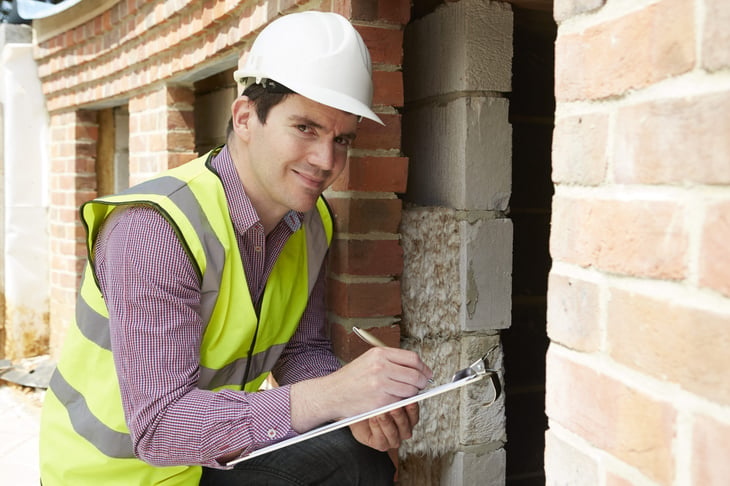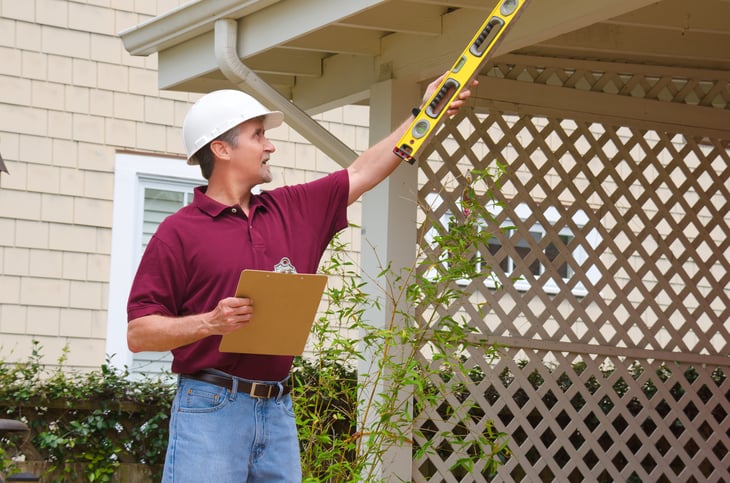
Editor's Note: This story originally appeared on Point2.
A home appraisal is an essential part of buying or selling a property and even applying for refinancing.
But what do appraisers actually look for when they visit?
In this guide, we’ll cover the main items on an appraiser’s checklist and how they can affect the value of a property.
The Home Appraiser’s Checklist

Broadly speaking, a home appraiser will check the size, function, and condition of the property.
In addition to this, they will also factor in amenities and home improvements, as well as items not pertaining to the property itself, such as the local market. Here are the main items on their list.
Outside the Property

Here’s what an appraiser looks at outside:
- Age and size of the property
- The condition the property is in compared with neighboring properties
- The state of the foundation, windows, and exterior walls
- The age and condition of the roof, as well as gutters and downspouts
- The driveway and off-street parking
- The garage and the number of cars it can fit
- Landscaping and how well it’s being maintained
- Accessory Dwelling Units such as a separate guest house on the property premises
- Outdoor amenities such as a swimming pool, a patio or porch, or a fire pit
- Signs of pest and water damage
- HVAC unit
- Septic tank versus sewer
- Solar panels and outdoor energy-efficient improvements
- Types of utilities used (gas, electricity, water) and whether they’re connected to a public provider
Inside the Property

Here’s what an appraiser looks at on the inside:
- The layout of the property, floor plan, and gross building area
- Number of rooms, bedrooms, bathrooms
- Types of appliances
- Fireplaces
- Types of materials used for the floor, walls, and trim, and the condition they’re in
- The way the home is styled and whether the decor is new or dated
- Home improvements and renovations
- Signs of pest infestations, water damage, and mold
- The condition the attic and basement are in, and whether there’s a sump pump in the basement
Beyond Property Limits

Here are other factors an appraiser considers:
- Location: rural, urban, or suburban
- Zoning and whether property usage is compliant with local laws
- The condition the neighboring properties, streets, and alleyways are in
- Whether the property is in a flood zone and how likely it is to be affected by natural hazards
- Proximity to sites such as landfills or power plants, amenities such as schools and shops, as well as interstates and airports
- Local market conditions, such as the number of properties sold in the area and whether prices are rising or dropping
Special Considerations for VA, USDA, and FHA Loans

If the loan for buying a home is backed by a governmental agency, an appraiser will also check that the property is compliant with health and safety regulations.
For example, they will check that the roof, foundation, crawl spaces, appliances, electricity, and heating units are functioning and in good condition.
On top of this, they can also check that all bedrooms have easy access to the exterior for fire safety reasons, whether lead-based paint is present, and even if the stairways have a handrail.
What Can Affect a Home Appraisal?

All the items on an appraiser’s list will affect the appraised value, for better or for worse.
Things that can increase the appraised value
As a rule of thumb, any structural items and amenities that are functional and in good condition will increase the value of your home.
Appraisers will also give points for home improvements that add value to the property, such as recent renovations, energy-efficient appliances, or outdoor amenities.
The materials used are also factored in, with hardwood flooring and granite countertops ranking higher than laminate alternatives. Cleanliness will not affect the home’s value, yet it’s still a good idea to tidy up and declutter to give the appraiser better access to what they need to check.
Things that can decrease the appraised value
On the other hand, the items that will lower the appraised value can range from things you can improve to those you have no say in.
For example, an appraiser can deduct points if the property is not being maintained, if the roof, walls, and foundation present structural flaws, if the property has signs of mold, water damage, and pest infestations, or the decor and appliances are a bit dated.
Similarly, older homes are valued lower than newly-built houses because they generally require more maintenance and have higher upkeep costs.
How can the local area impact the appraised value?
What happens outside property limits is beyond your control yet can also have a significant chance of increasing or lowering its appraised value.
For example, a home can be appraised for less if it’s in a declining market, lacks access to local amenities, or is within a FEMA flood zone.
However, a property in a hot market, in a trendy neighborhood, and close to schools or employers may even be appraised higher than the selling price.





Add a Comment
Our Policy: We welcome relevant and respectful comments in order to foster healthy and informative discussions. All other comments may be removed. Comments with links are automatically held for moderation.